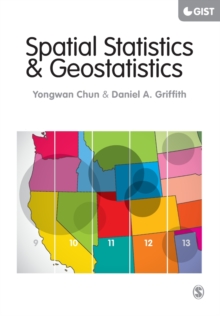
Spatial Statistics and Geostatistics : Theory and Applications for Geographic Information Science and Technology PDF
by Yongwan Chun, Daniel A Griffith
Part of the SAGE Advances in Geographic Information Science and Technology Series series
Description
"Ideal for anyone who wishes to gain a practical understanding of spatial statistics and geostatistics. Difficult concepts are well explained and supported by excellent examples in R code, allowing readers to see how each of the methods is implemented in practice"
- Professor Tao Cheng, University College London
Focusing specifically on spatial statistics and including components for ArcGIS, R, SAS and WinBUGS, this book illustrates the use of basic spatial statistics and geostatistics, as well as the spatial filtering techniques used in all relevant programs and software. It explains and demonstrates techniques in:
- spatial sampling
- spatial autocorrelation
- local statistics
- spatial interpolation in two-dimensions
- advanced topics including Bayesian methods, Monte Carlo simulation, error and uncertainty.
It is a systematic overview of the fundamental spatial statistical methods used by applied researchers in geography, environmental science, health and epidemiology, population and demography, and planning.
A companion website includes digital R code for implementing the analyses in specific chapters and relevant data sets to run the R codes.
Information
-
Download - Immediately Available
- Format:PDF
- Pages:200 pages
- Publisher:SAGE Publications
- Publication Date:11/01/2013
- Category:
- ISBN:9781446272114
Other Formats
- Paperback / softback from £41.65
- EPUB from £33.99
- Hardback from £132.00
Information
-
Download - Immediately Available
- Format:PDF
- Pages:200 pages
- Publisher:SAGE Publications
- Publication Date:11/01/2013
- Category:
- ISBN:9781446272114










